Introduction
Pigment Yellow 12 (PY12) is one of the most widely used organic yellow pigments in the industry. Belonging to the diarylide yellow class, it is prized for its bright greenish-yellow hue, high tinting strength, and cost-effectiveness. This pigment is a staple in printing inks, plastics, coatings, and more, making it a crucial choice for manufacturers.
But how do you determine high-quality PY12? What industries rely on it the most? And what are the key parameters to check before purchasing?
In this guide, we’ll explore:
- What Pigment Yellow 12 is
- Key properties & technical specifications
- How to identify high-quality PY12
- Major applications & industry demand
- Alternatives for specialized needs
1. What is Pigment Yellow 12?
Pigment Yellow 12 (CAS: 6358-85-6) is a disazo-based organic pigment with the chemical name 3,3′-Dichlorobenzidine bis(acetoacetanilide). It is known for its:
- Bright yellow shade with green undertones
- Excellent color strength (high tinting power)
- Good dispersibility in various mediums
- Affordability compared to high-performance pigments
However, it has moderate lightfastness, making it more suitable for indoor applications rather than long-term outdoor exposure.
2. Key Properties & Technical Specifications
When selecting PY12, manufacturers should verify the following parameters (reference: FineLand Chem’s Pigment Yellow 12):
| Property | Typical Value | Importance |
|---|---|---|
| Color Index | PY12 (Pigment Yellow 12) | Standard classification |
| Molecular Formula | C₃₂H₂₆Cl₂N₄O₄ | Chemical structure |
| Appearance | Fine yellow powder | Ease of dispersion |
| Density (g/cm³) | ~1.4 | Affects formulation density |
| Oil Absorption (g/100g) | 40-50 | Determines binder demand |
| Heat Resistance (°C) | 180-200 | Critical for plastics & coatings |
| Lightfastness (ISO 105-B02) | 5-6 (moderate) | Fading resistance |
| Solvent Resistance | Good (except strong polar solvents) | Stability in inks & coatings |
Why These Parameters Matter?
- Particle size & dispersion: Finer particles ensure smoother color distribution.
- Heat resistance: Crucial for plastic molding and baking coatings.
- Lightfastness: Determines if the pigment is suitable for outdoor use.
3. How to Identify High-Quality Pigment Yellow 12
Not all PY12 pigments are equal. Here’s how to ensure you’re getting a premium-grade product:
A. Check for Consistency in Color Strength
- High-quality PY12 should have strong tinting power, meaning less pigment is needed to achieve vibrant colors.
- Compare batches using spectrophotometer readings (ΔE < 1) to ensure consistency.
B. Evaluate Dispersibility
- Poor dispersion leads to grittiness, streaking, or uneven color in inks/plastics.
- A well-milled PY12 should blend smoothly in resins and solvents.
C. Verify Chemical Purity
- Low-quality PY12 may contain impurities (e.g., free amines, heavy metals).
- Request REACH/ROHS compliance certificates to ensure safety for food packaging and toys.
D. Assess Lightfastness & Weather Resistance
- If used in outdoor applications, check for lightfastness ratings (ISO 105-B02 ≥ 6).
- For indoor uses (e.g., magazine printing), standard PY12 is sufficient.
4. Major Applications of Pigment Yellow 12
① Printing Inks (Primary Market)
PY12 is a top choice for packaging inks due to its:
- Brightness & opacity (excellent for flexo & gravure printing).
- Cost-efficiency (cheaper than alternatives like PY74 or PY83).
- Compatibility with most ink systems (water-based, solvent-based, UV-curable).
Common Uses:
- Food packaging (flexible films, labels)
- Magazine & commercial printing
- Security inks (banknotes, barcodes)
② Plastics & Polymers
PY12 is widely used in:
- PVC products (hoses, flooring, toys)
- Polyethylene (PE) & polypropylene (PP) (bottles, containers)
- Injection-molded parts (household items, automotive interiors)
Note: Its heat resistance (~200°C) makes it suitable for most plastic processing, but not for high-temp engineering plastics.
③ Paints & Coatings
- Industrial coatings (metal primers, indoor decorative paints)
- Textile printing pastes
- Paper coatings
Limitation: Not ideal for long-term outdoor exposure (e.g., automotive paints) due to moderate UV resistance.
5. Alternatives to Pigment Yellow 12
If PY12 doesn’t meet specific requirements, consider:
| Pigment | Advantages Over PY12 | Best For |
|---|---|---|
| PY74 | Better lightfastness, non-chlorinated | Outdoor inks, coatings |
| PY83 | Higher opacity, reddish-yellow tone | Premium printing inks |
| PY154 | Excellent weather resistance | Automotive & exterior paints |
| PY139 | Superior heat stability (>250°C) | Engineering plastics |
6. Conclusion: Is PY12 Right for Your Needs?
Pigment Yellow 12 remains a versatile, economical choice for:
✔ Packaging inks (high color strength, low cost)
✔ Indoor plastics & coatings (good dispersibility)
✔ Applications not requiring extreme UV resistance
For best results:
- Source from reliable suppliers (like FineLand Chem)
- Verify technical datasheets (particle size, oil absorption, lightfastness)
- Consider alternatives if high weather resistance is needed
By understanding these factors, manufacturers can optimize formulations and select the best yellow pigment for their products.





